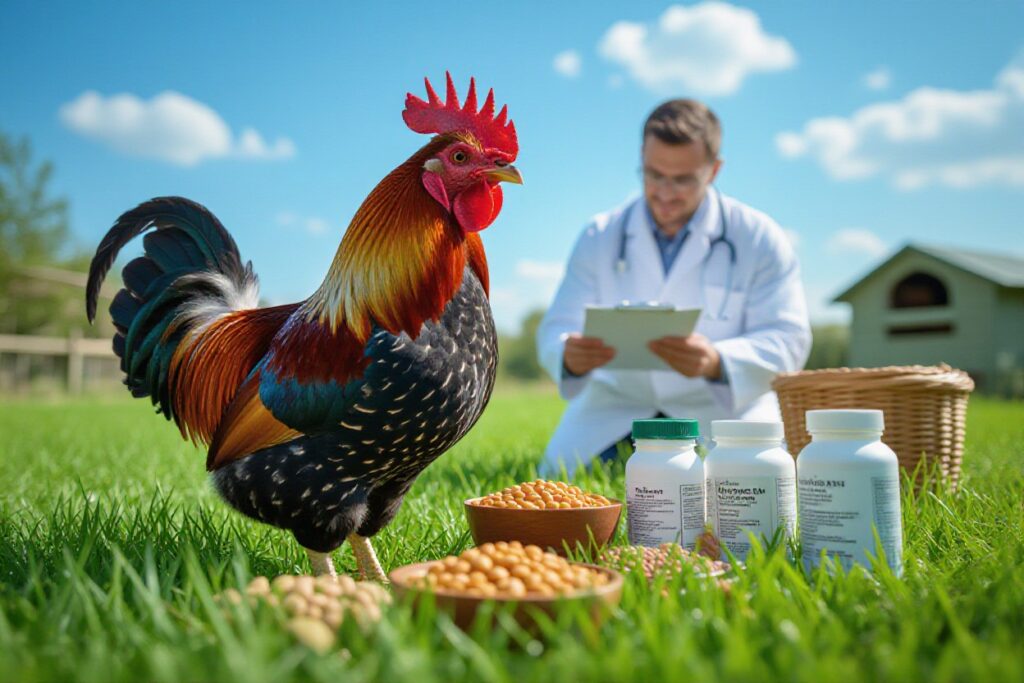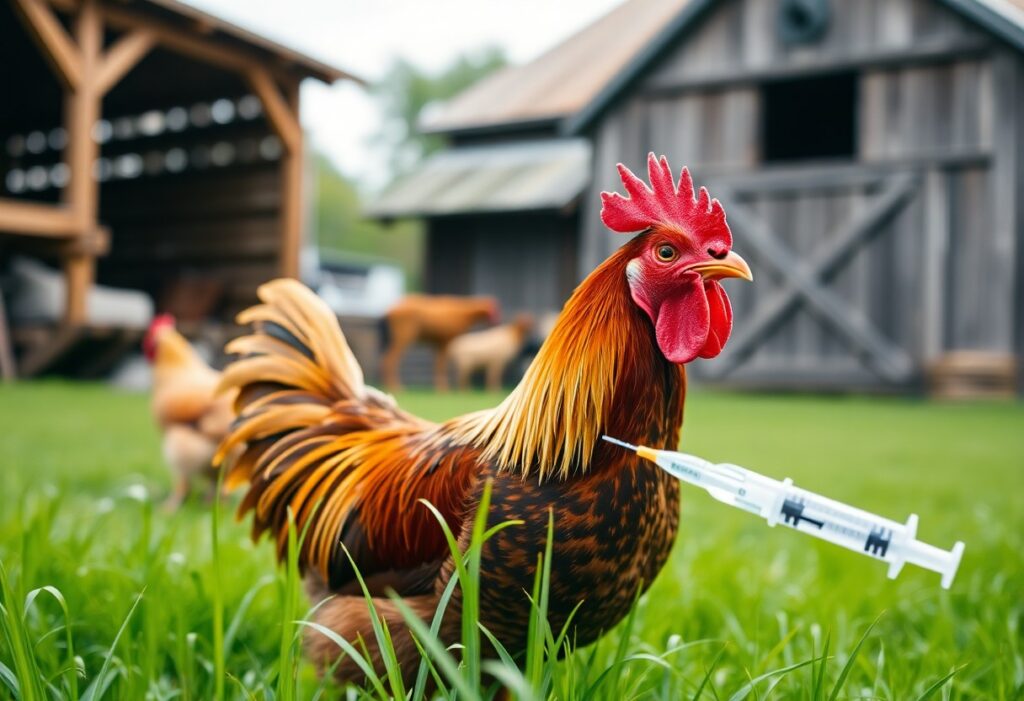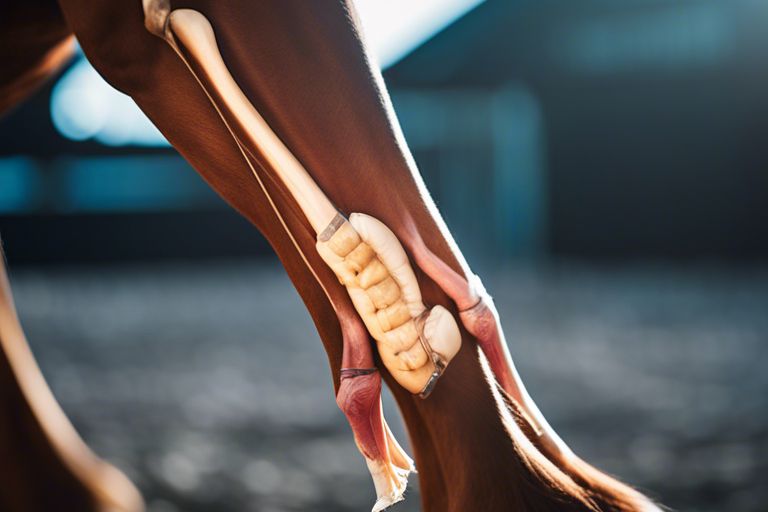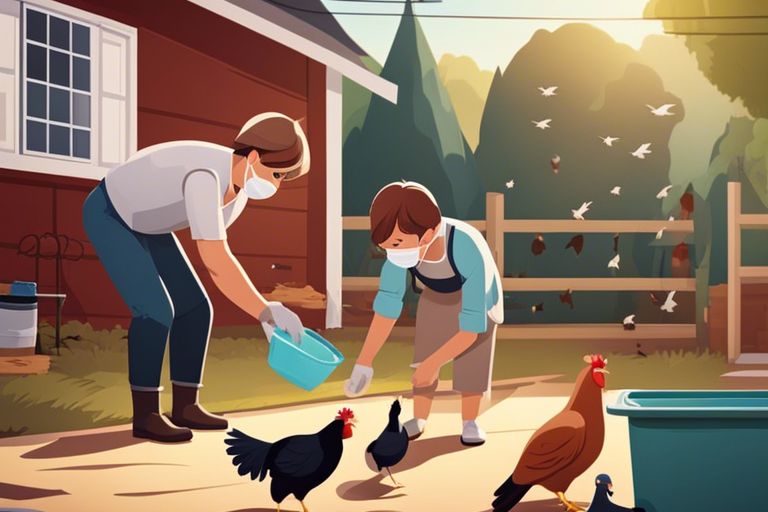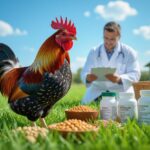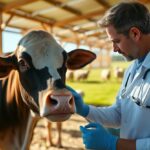Many flock owners wonder can roosters be sick and how to protect their birds; you should watch for signs like lethargy, weight loss, nasal discharge, or lameness. This guide focuses on common threats — respiratory infections, parasites, bumblefoot and frostbite on combs — plus reproductive problems, symptoms to monitor, treatment options, and strong prevention: biosecurity and vaccination to reduce risk and keep your rooster healthy.
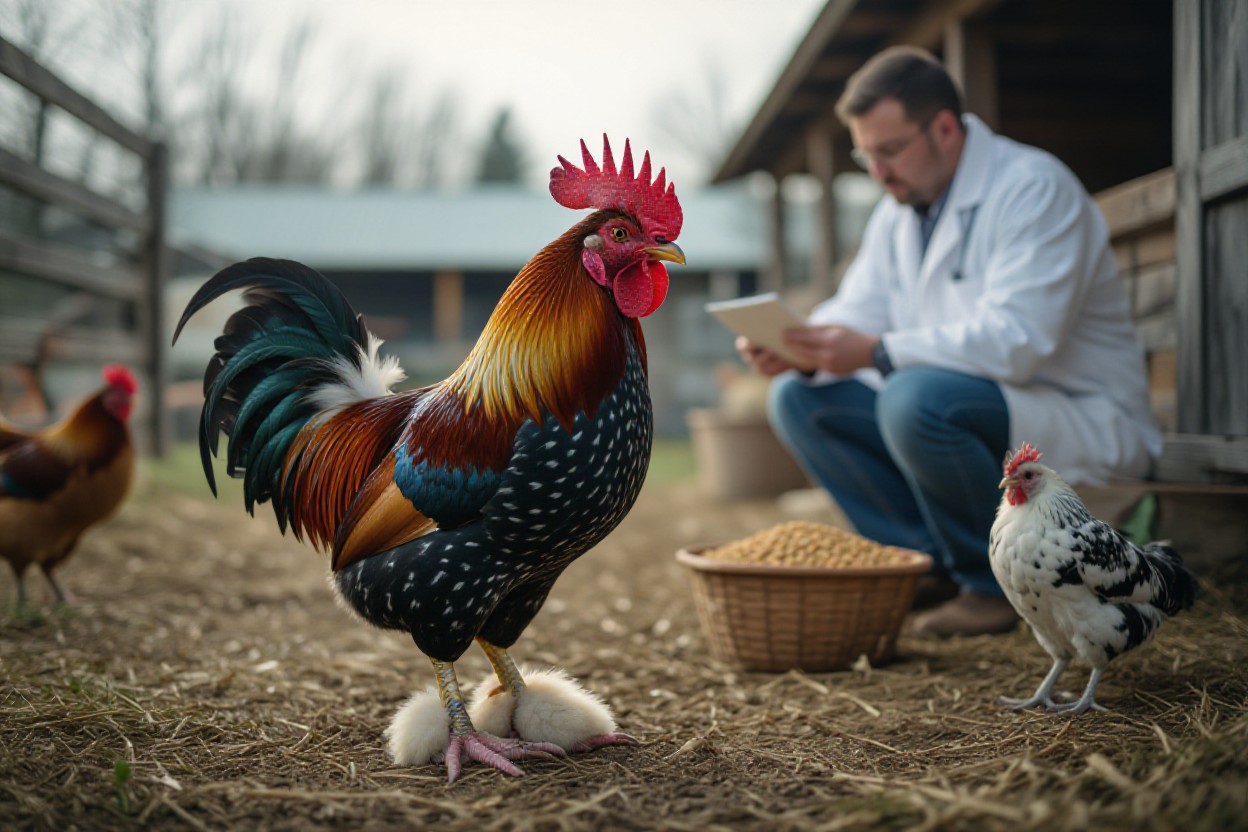
Common Diseases
You’ll encounter a predictable set of illnesses in roosters: respiratory viruses, bacterial infections, parasites, bumblefoot, frostbite on combs, and reproductive problems. Outbreaks like avian influenza can cause very high mortality, while chronic issues such as Mycoplasma and parasitic infestations silently reduce vigor and mating performance. Watch for nasal discharge, swollen wattles, limping, or drops in activity; early detection plus targeted treatment, vaccination where available, and strict biosecurity cut morbidity and protect both your birds and your flock’s productivity.
Viral Infections
Viruses you’ll see include infectious bronchitis, Marek’s disease, and avian influenza; each behaves differently. Infectious bronchitis often reduces egg production by 10–40% and can damage kidneys, whereas highly pathogenic avian influenza can produce mortality up to 80–90% in unvaccinated flocks. Vaccination programs reduce risk for Marek’s and some strains of bronchitis, but you must combine vaccination with strict quarantine and monitoring to limit spread within 3–10 days of exposure.
Bacterial Infections
Bacterial threats include fowl cholera (Pasteurella multocida), colibacillosis (E. coli), Salmonella enterica, Mycoplasma species, and Staphylococcus-related bumblefoot. Outbreaks of fowl cholera can cause rapid, high mortality, while Salmonella carries a zoonotic risk to you and your family. You should suspect bacterial disease when roosters show localized swelling, systemic lethargy, or persistent respiratory signs despite antivirals and supportive care.
Diagnostics require culture and sensitivity testing; empirical treatment risks driving antibiotic resistance. In practice, you’ll obtain a swab or tissue sample and work with a vet to choose antibiotics such as tylosin or doxycycline when indicated, typically for 5–14 days depending on severity. Surgical debridement is often necessary for bumblefoot, with recovery of 2–4 weeks in backyard cases; vaccination exists for fowl cholera and targeted biosecurity (isolation, cleaning, rodent control) prevents recurrence.
Parasite Problems
You’ll face two main parasite classes in roosters: internal worms that sap nutrition and external parasites that cause irritation and blood loss. Routine fecal checks, coop hygiene, and targeted treatments stop low-level infestations from becoming emergencies. Pay attention to changes in weight, comb color, or behavior—parasites often present subtly before causing measurable production losses in the flock.
Internal Parasites
You should watch for common species like Ascaridia galli, Heterakis and tapeworms; signs include weight loss, soft droppings, pale combs and reduced fertility. Diagnose with periodic fecal floats and post-mortem gut exams when needed. Anthelmintics such as fenbendazole or flubendazole are commonly used under veterinary guidance, and rotating deworming based on test results helps prevent resistance and keeps your birds productive.
External Parasites
You’ll most often see lice, northern fowl mite and red mite (Dermanyssus gallinae); infestations cause feather damage, constant preening, and anemia from blood loss in severe cases. Red mites hide in cracks by day and feed at night, with a life cycle of about 7–10 days, so infestations can explode quickly. Inspect vents, under wings and roosts regularly and isolate affected birds to limit spread.
For control, treat both birds and environment: clean perches, vacuum crevices, launder nest materials, and apply poultry-approved acaricides or food-grade diatomaceous earth in dust baths. Repeat treatments after one life cycle (7–10 days) and treat all flock members, plus equipment and adjacent pens, since eggs in cracks will restart infestations if you miss reservoirs.
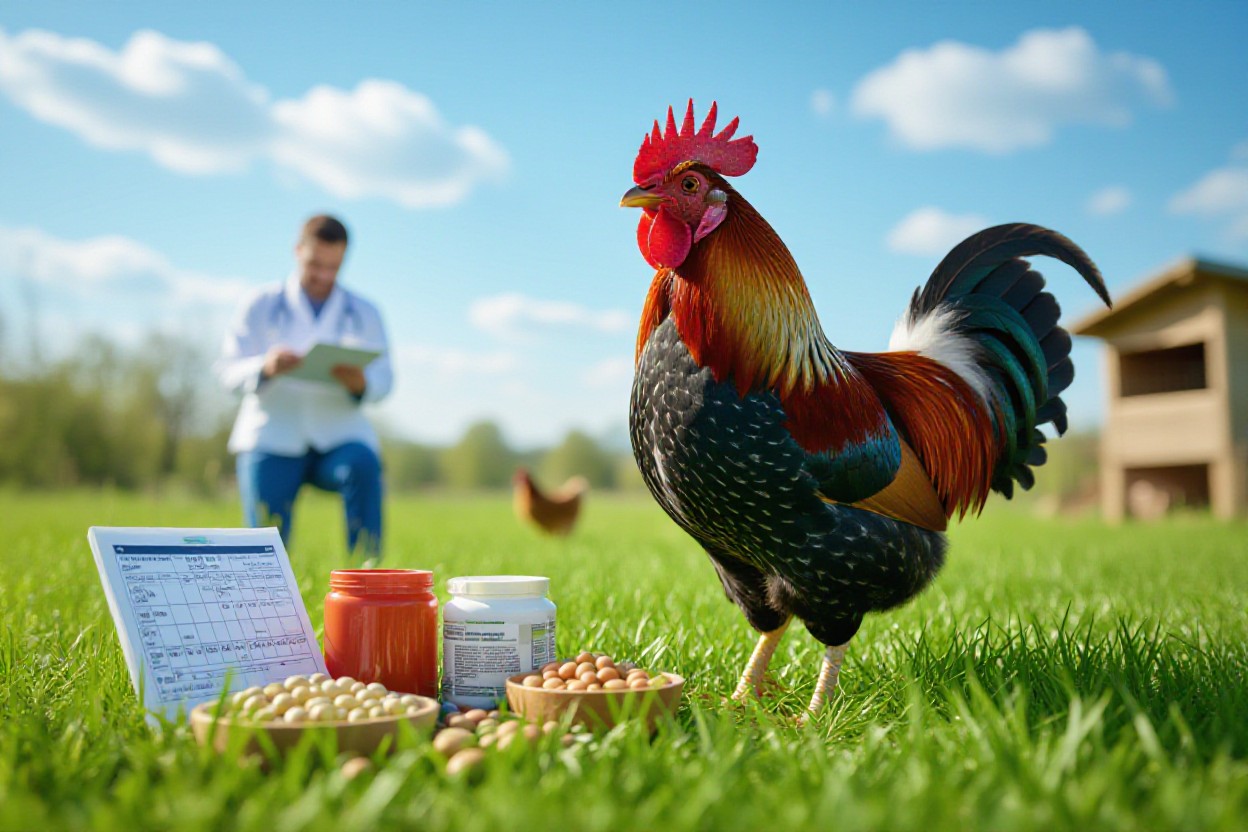
Injury Prevention
Focus on eliminating hazards that turn minor issues into infections: keep perches at 18–24 inches high with 1.5–2 inch diameter for large breeds and allow 8–12 inches of roost space per bird, avoid wire flooring that causes bumblefoot, and inspect daily for sharp edges or loose hardware. When you control environment and social stressors you reduce wounds, secondary bacterial infections, and the conditions that answer the question “can roosters be sick” with avoidable causes.
Enclosure Safety
Secure the run with 1/2–1 inch mesh and bury hardware cloth at least 12 inches to stop digging predators; fit latches that can’t be lifted by raccoons and eliminate protruding nails or jagged wire. Provide solid nesting and floor surfaces to prevent foot abrasions, give weather shelter, and maintain 2–4 square feet of coop space per bird to limit crowding injuries.
Social Interaction Risks
Aggression causes many visible wounds—monitor for torn combs, feather loss, and limping; separate fighting birds immediately and quarantine newcomers for 14–28 days. You should expect the first 48–72 hours after introductions to be highest risk and prepare temporary dividers to reduce direct contact while hierarchies settle.
When you introduce birds, stage introductions: place new birds in an adjacent pen for 3–7 days so they can see and smell each other, then allow monitored short interactions. Increase feeders (aim for 1 feeder per 4–6 birds) and add enrichment like hay bales to diffuse aggression; if a rooster repeatedly causes deep wounds or blood loss, remove him to prevent infection and spread of parasites or pathogens.
Treatment Protocols
When a rooster shows signs of illness you should isolate it immediately, run targeted diagnostics (swabs, fecal float, culture or PCR) and start supportive care—heat, fluids, and nutrition—while awaiting results. Veterinary-directed therapy then combines targeted antimicrobials or antiparasitics, topical wound management, and surgical intervention where needed; typical courses run from 3–14 days depending on diagnosis, with scheduled reassessment to avoid relapse or resistance.
Medical Treatments
You may need prescription drugs: for bacterial respiratory disease vets commonly use antibiotics such as enrofloxacin (~10 mg/kg PO once daily for 3–5 days under vet guidance) or oxytetracycline; for nematodes, fenbendazole at label doses; for inflammation, meloxicam (often ~0.5 mg/kg). Wounds like severe bumblefoot sometimes require surgical debridement plus topical antiseptics (chlorhexidine) and a 5–10 day antimicrobial course.
Home Remedies
In early or mild cases you can provide effective supportive care: offer warmed water with poultry electrolytes, keep the bird in a dry, warm recovery box (around 30–35°C for chicks, slightly lower for adults), clean wounds with saline, and apply topical antibiotic ointment until you reach a vet. For frostbite, use gradual warming and avoid rubbing the comb to prevent tissue damage.
More detailed home care includes soaking bumblefoot lesions in warm Epsom-salt baths for 10–15 minutes daily to reduce swelling, applying a thin layer of silver sulfadiazine or vet-approved topical antibiotic, and changing dressings daily; track weight, droppings, and respiration every 12 hours and seek vet care if signs worsen or fail to improve within 48–72 hours.
Preventive Care
You should enforce a 30-day quarantine for new birds, perform weekly health checks (comb color, gait, droppings), clean feeders daily and the coop at least weekly with a deep clean monthly, and control rodents and wild-bird access. Use biosecurity logs to track vaccinations and treatments, isolate sick roosters immediately, and apply targeted parasite monitoring (fecal checks) rather than blanket treatment when possible to limit resistance and detect problems early.
Vaccination Strategies
You can protect roosters by using a combination of live attenuated (spray/water) and inactivated (injectable) vaccines targeted to your region: Newcastle disease, Infectious Bronchitis, and Infectious Bursal Disease are common choices. Provide boosters every 6–12 months based on exposure risk, use injectable killed vaccines for breeder males to boost systemic immunity, and maintain clear records; consult a veterinarian to tailor schedules and avoid vaccine interference.
Nutrition and Maintenance
Feed your rooster a maintenance ration with about 16% protein, supply clean water (≈250–500 ml/day), provide grit if free-ranging, and avoid continuous high-calcium supplements (oyster shell) to prevent metabolic issues; give perches 5–7.5 cm wide to reduce bumblefoot risk and keep bedding dry to limit foot and respiratory problems.
Increase dietary protein to 17–18% for active breeders or during recovery; monitor intake (~120–150 g/day for an average adult bird) and adjust energy by adding cracked corn or fat during cold snaps (+10–20% calories). Ensure vitamins A, D, E and selenium are adequate—deficiencies reduce fertility and immune response—and use probiotics or fermented feed for gut health. Track body condition on a 1–5 scale aiming for ~3, weigh monthly, and avoid salty or moldy scraps; a small case series showed fertility and comb condition improved within six weeks after switching 12 roosters from 14% to 17% protein plus vitamin E supplementation.
FAQs
Can roosters be sick?
Yes, roosters can be sick; you’ll most often see respiratory infections, parasites, bumblefoot and reproductive issues. In outbreaks, respiratory disease can cut flock performance by around 20–30%, and some pathogens carry high mortality, so rapid detection and treatment are imperative.
How will I recognize illness in my rooster?
Look for changed behavior: reduced crowing, weight loss of 5–10%, nasal/ocular discharge, sneezing, swollen wattles, limping, or decreased comb color. If you spot labored breathing, bloody droppings, or severe lethargy, treat as an emergency and isolate the bird.
When should I isolate a rooster?
Isolate immediately if your rooster shows any respiratory signs, >2 clinical symptoms, or open wounds. Quarantine new birds for 30 days and keep sick birds separated for at least 14 days or until a vet confirms recovery to limit spread.
Can roosters transmit diseases to hens or humans?
Yes—roosters transmit pathogens to hens through direct contact and to humans via contaminated eggs, feces, or surfaces. Some agents, like avian influenza, are zoonotic, so enforce strict biosecurity and personal hygiene when handling sick birds.
Which vaccinations help roosters?
Vaccines commonly used include Marek’s, Newcastle disease and infectious bronchitis, with schedules varying by region and flock risk; many flocks vaccinate at hatchery or during pullet rearing, so consult your vet to align vaccination with local disease pressure.
How can I prevent bumblefoot, frostbite and parasites?
Manage prevention with clean, dry bedding, regular foot inspections, textured perches to reduce pressure points, insulated housing for cold snaps to protect combs, and scheduled deworming plus mite control; overall, biosecurity and routine checks cut incidence dramatically.
Summing up
Presently you should understand that the answer to “can roosters be sick” is yes; they commonly suffer respiratory infections, parasites, bumblefoot, frostbite, and reproductive disorders. You can spot illness early by monitoring behavior, appetite, comb color, breathing, and droppings. Prompt isolation, targeted treatment, and veterinary care limit spread. You protect your flock with strict biosecurity, appropriate vaccination and deworming, proper housing, and balanced nutrition to reduce disease risk.
